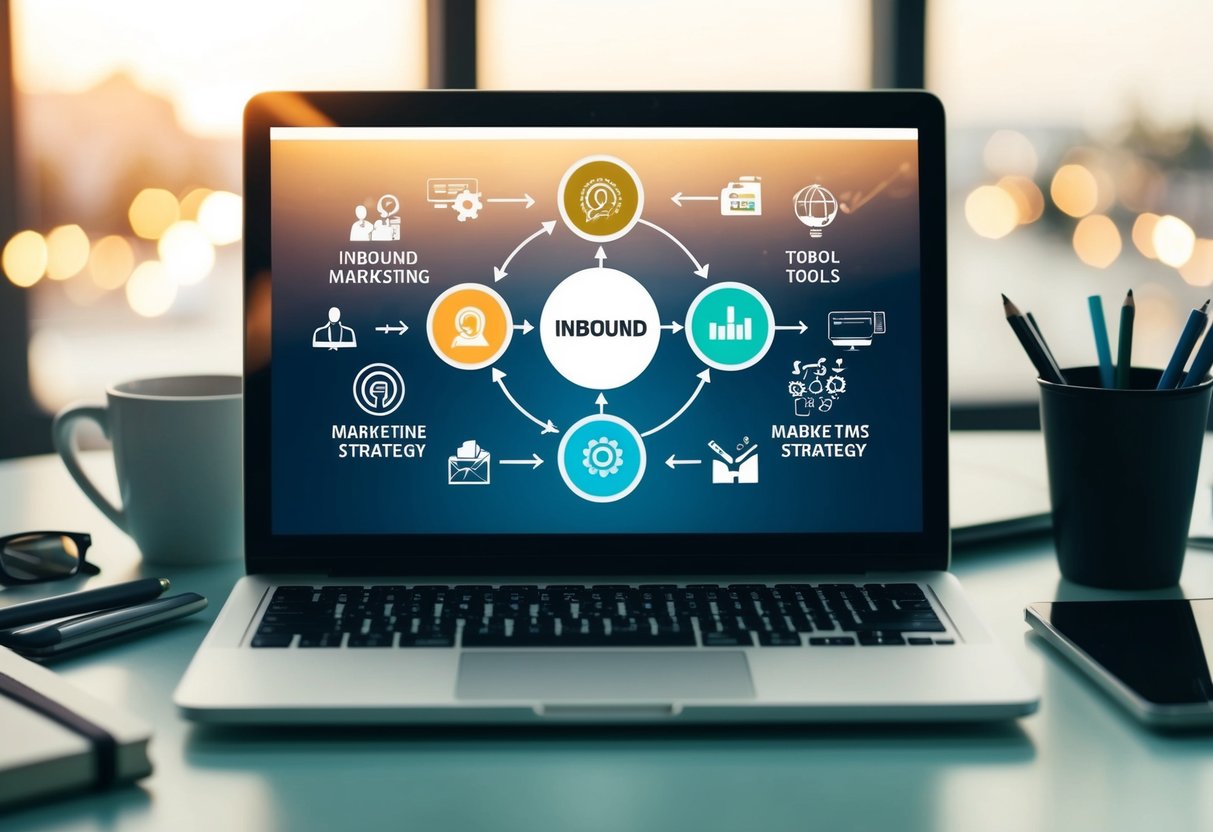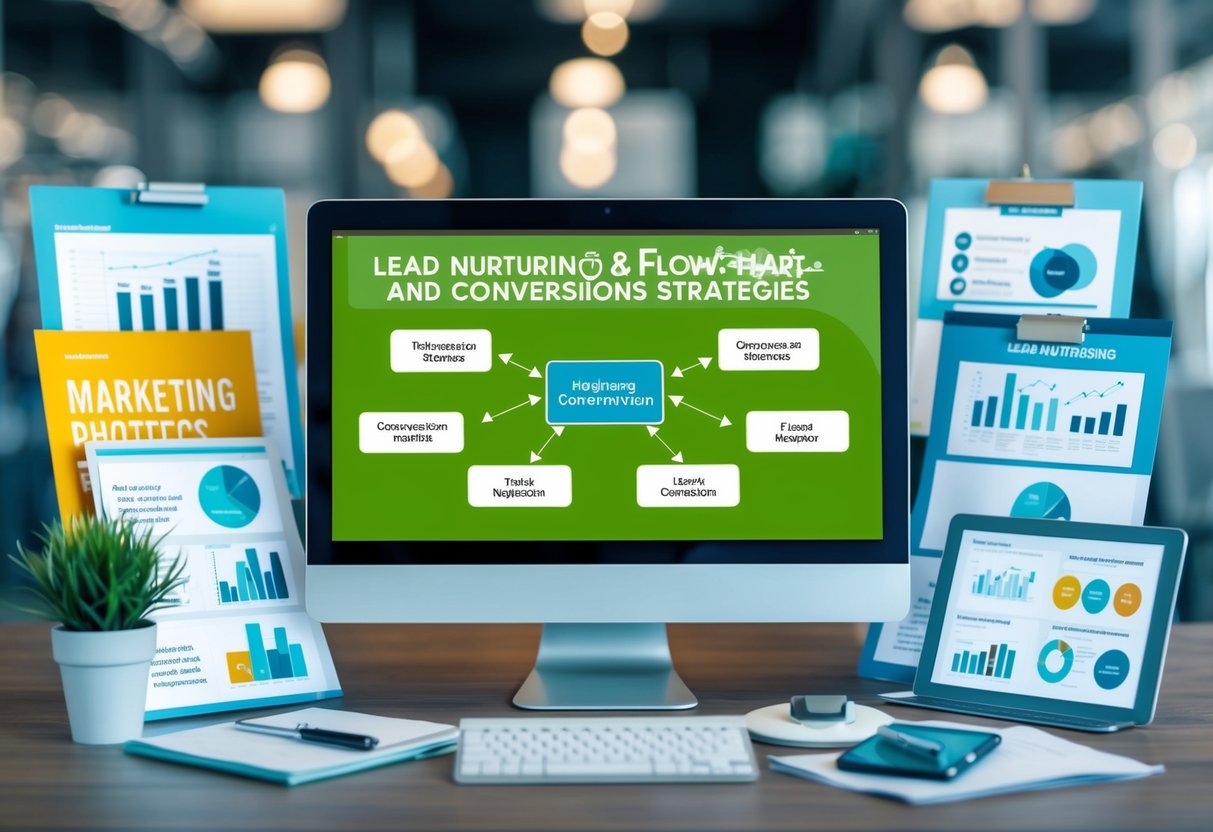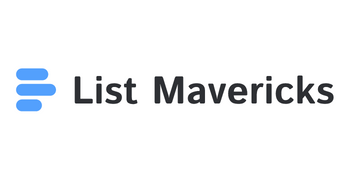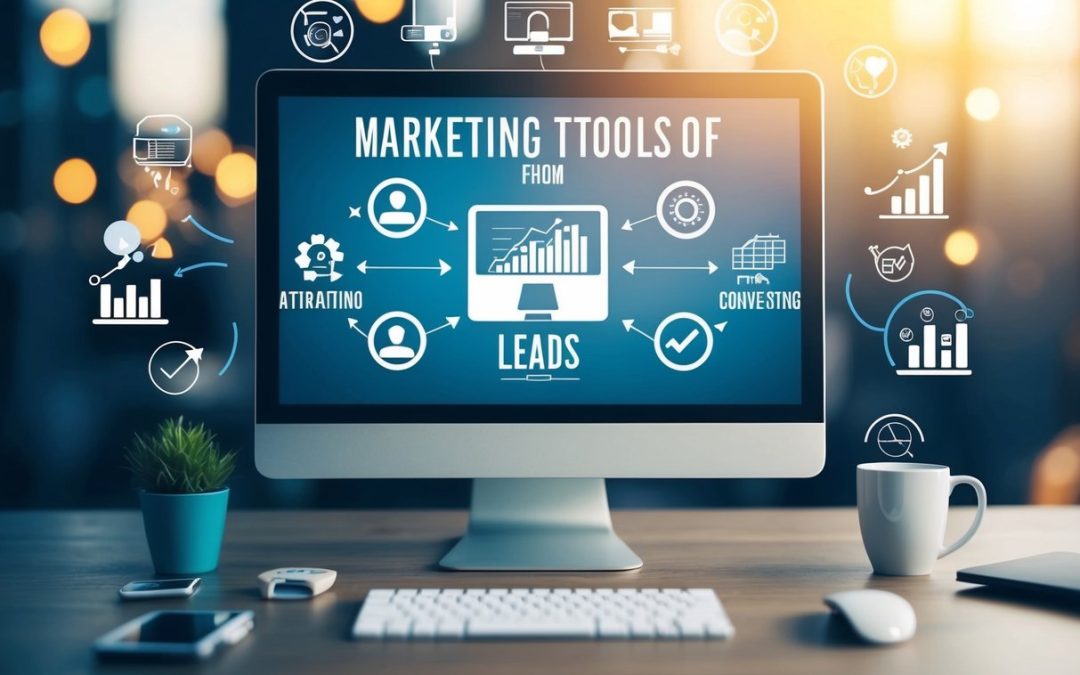Are you tired of chasing customers who couldn’t care less about your products? Maybe it’s time to try inbound marketing. Inbound marketing is a methodology that attracts customers by offering valuable content and experiences tailored just for them.
Instead of bombarding people with ads they ignore, inbound marketing gives them resources that actually help, building real trust along the way.
With this approach, you align your content with your audience’s interests. You pull customers in, rather than shoving your message at them.
You use quality content and personalized interactions to connect with people already searching for solutions in your space. The end result? Your marketing feels helpful, not pushy.
Key Takeaways
- Inbound marketing brings in qualified leads by creating content that addresses their real needs.
- Success depends on understanding your audience deeply and crafting content that fits every stage of their journey.
- Analytics let you tweak your approach for better results and more conversions.
Fundamentals of Inbound Marketing Strategy

Inbound marketing creates valuable content that naturally draws potential customers to your business. You start by understanding what your customers want and then offer solutions that match their interests.
Defining Inbound Marketing
Inbound marketing attracts customers by offering content and experiences designed just for them. Unlike traditional advertising, inbound lets people discover your business through content that solves their problems.
You focus on building real connections with your audience. By sharing helpful resources, you build trust and credibility before anyone even thinks about buying.
Small businesses really gain an edge with inbound because they don’t need huge ad budgets to compete. Instead of pushing products, you help solve customer problems with educational content, blogs, videos, and social media engagement.
Core Principles of Inbound Methodology
The inbound methodology has four main steps: Attract, Convert, Close, and Delight. Each one guides prospects through their buying journey.
Attract: Make content that brings in the right visitors.
- Blog posts that answer real questions
- SEO-friendly website content
- Social media posts that add value
Convert: Turn visitors into leads with smart opportunities.
- Landing pages with clear calls-to-action
- Simple lead capture forms
- Content offers like eBooks or webinars
Close: Turn leads into customers by nurturing relationships.
- Email sequences that keep people interested
- CRM systems to track every interaction
- Personalized communication
Delight: Keep providing value after the sale to turn customers into fans. That’s how you build loyalty through ongoing support.
Differences From Outbound Marketing
Outbound marketing interrupts people with messages they didn’t ask for. Inbound earns attention by offering something valuable. This big difference really changes how you approach marketing.
Outbound tactics like cold calling, TV ads, and direct mail push products to everyone, no matter if they’re interested or not. Inbound, though, pulls in prospects who are actually looking for what you offer.
The costs stack up differently, too. Inbound usually takes more effort upfront but costs less in the long run, which is great for small businesses with tight budgets.
Digital channels sit at the heart of inbound, letting you target and measure with precision. Analytics show what content works, so you can keep improving based on real data.
The customer relationship changes, too. Instead of just selling, you educate and support, which leads to stronger business growth over time.
Identifying Your Target Audience

You can’t market to everyone. Knowing exactly who you want to reach forms the core of effective inbound marketing.
When you identify your audience, you create content that connects and actually converts.
Building Buyer Personas
Buyer personas are detailed profiles of your ideal customers, built from real data and research. These fictional characters help you get inside your customers’ heads and see how they make decisions.
To build strong buyer personas, start with market research—think surveys and focus groups. You’ll learn what motivates your customers and how they behave.
Check your current customer base for trends. Who buys most often? What do they have in common?
Consider these for every persona:
- Demographics: Age, income, education, job
- Goals and challenges: What they want and what’s in their way
- Information sources: Where they go to learn
- Objections: What might stop them from buying
Three to five detailed personas usually cover your main segments.
Recognizing Pain Points
When you understand customer pain points, you can show how your product solves real problems. Pain points are the headaches your prospects deal with every day.
Start by digging into your current customers’ stories. What frustrated them before they found you? What roadblocks did they hit?
Sort pain points into:
- Financial: Money worries, tight budgets
- Productivity: Wasting time, slow processes
- Process: Confusing steps, messy workflows
- Support: Not enough help or guidance
Talk to customers, run surveys, and listen on social to confirm what really bothers them. That way, you address actual issues, not just guesses.
Audience Segmentation
Segmentation breaks your big audience into smaller, similar groups. This lets you personalize your marketing so it feels relevant.
Start by building detailed customer profiles. Keep segments specific enough to matter, but big enough to be worth your effort.
You can segment by:
- Demographic: Age, gender, income, education
- Psychographic: Values, interests, lifestyle
- Behavioral: How they buy, how they interact, what features they use
- Geographical: Where they live and what they need there
Test different messages with each group. Watch the data—see what works and adjust.
Markets change, so your segments will too. Make it a habit to review and update your segmentation to keep things on track.
Content Creation and Optimization

Content sits at the heart of inbound marketing. Great content brings visitors, earns trust, and turns leads into customers—if you optimize it for both search engines and people.
Content Planning and Blogging
Good content planning means knowing what your audience cares about. Build a content calendar with topics, keywords, and a regular publishing schedule to keep your blogging on track.
Blogging still works for inbound marketing. It brings in organic traffic and helps you look like an industry leader.
Try to post regularly, but don’t sacrifice quality for quantity. Each post should fit a stage in the buyer’s journey—awareness, consideration, or decision.
Keep an eye on metrics like page views, time on page, and conversions. Use what you learn to improve your blogging strategy.
SEO and Keyword Research
If you want people to find your content, SEO optimization is a must. Start with solid keyword research to see what your target audience actually searches for.
Look for:
- Primary keywords with good search volume
- Long-tail keywords that are less crowded
- Question phrases that match real queries
- Semantic keywords that relate to your topic
Work these keywords naturally into your content—titles, headings, text, and meta descriptions. Don’t overdo it, or you’ll turn people off and hurt your rankings.
Technical SEO matters, too. Make sure your site loads fast, works on mobile, has clear headings, and links to other pages on your site.
Creating Valuable Content
Valuable content solves your customers’ problems and gives them something they can use. It should be original, insightful, and practical—people should walk away with real tips.
What makes content valuable?
- It goes deep (not just surface-level)
- It’s accurate and trustworthy
- It uses real examples
- It shares expert opinions
- It explains things clearly
Mix up your formats. Some folks love long guides, others want quick tips or case studies.
Keep your writing easy to read—short paragraphs, bullet points, and clear subheadings help a lot. The easier it is to read, the more likely people are to stick around and take action.
Leveraging Visual and Downloadable Assets
Visuals make content more engaging and easier to remember. Use images, infographics, charts, and videos to break up text and explain tricky ideas.
Downloadable resources like eBooks, templates, and checklists work as lead magnets. People are happy to trade their contact info for something useful.
When you make downloadable content:
- Solve a real problem
- Give actionable advice
- Use clean, professional designs
- Add your branding
- Keep files small for fast downloads
Share these assets on your site, social media, and in emails to reach more people. Make sure everything ties back to your content strategy and buyer personas.
Traffic Generation and Audience Engagement

If you want inbound marketing to work, you need to bring in traffic and keep your audience engaged. These pieces go hand in hand—attract visitors, then turn them into loyal customers through smart digital touchpoints.
Maximizing Social Media Presence
Building a strong social media presence takes a real plan and steady effort. Don’t try to be everywhere—pick the platforms where your audience actually hangs out.
Content calendars help you stay consistent. Aim for a mix: about 20% promotional, 80% valuable or shareable info that solves problems for your followers.
Don’t obsess over follower counts. Instead, track engagement—comments, shares, conversions. Companies that focus on real interaction usually see better leads.
Visual content tends to perform about 40% better on most platforms. Use branded images, infographics, and short videos to stand out in busy social feeds.
Designing Effective Landing Pages
Landing pages act as conversion gateways for your inbound traffic. Each one should highlight a single offer and feature a clear call-to-action that pops visually.
Ask for only what you really need on forms. Every extra field tends to drop conversion rates by around 11%—kind of wild, right?
Try out A/B tests on headlines, images, and button text. If you test one thing at a time, you’ll get a clearer sense of what your audience actually likes.
Don’t ignore mobile users. Over 60% of folks visit landing pages on their phones, so responsive design isn’t really optional if you want to increase website traffic.
Keep visual consistency between your landing pages and the ads or links that brought visitors in. That little detail can build trust and help lower bounce rates.
Optimizing Site Design and User Experience
Web design shapes how visitors engage and whether they stick around. Try to keep your site loading under three seconds—every extra second pushes bounce rates up by 12%.
Follow the three-click rule for navigation. If users can’t find what they need in three clicks, they’ll probably bail. Menus and search bars that make sense go a long way for user experience.
Platforms like WordPress offer templates that balance looks and speed. You don’t need to be a tech wizard to use these for inbound marketing fundamentals.
Heat mapping tools let you see where people click and scroll. Use that info to place important elements and calls-to-action where they’ll get noticed.
Add accessibility features like alt text, solid color contrast, and keyboard navigation. Not only does this help everyone use your site, but it also gives your SEO a boost.
Lead Nurturing and Conversion Strategies

Lead nurturing helps you turn potential customers into buyers through personalized engagement. Mix up your channels and send content and follow-ups that actually matter to your prospects.
Using Forms for Lead Capture
Forms let you collect valuable info from prospects. Placing them strategically on your site can really lift conversion rates.
Best practices for form design:
- Keep it short (3-5 fields tops)
- Only ask for what’s essential
- Use progressive profiling to gather more over time
- Add clear calls-to-action (CTAs)
Where you put your forms matters. Landing pages, blog posts, and resource downloads usually work best. Personalized approaches help you stand out and build trust.
Try adding dropdowns or checkboxes to make forms more interactive. Test different designs to see what your audience actually prefers.
Platforms like HubSpot offer form builders and analytics so you can track completion rates and spot where people drop off.
Email Marketing Automation
Email still delivers when it comes to lead nurturing. Automated sequences send targeted content based on what users do and what they care about.
Key email marketing components:
- Welcome emails for new signups
- Educational series
- Behavior-triggered messages
- Re-engagement campaigns
Don’t just slap a name on there and call it personalization. Segment your lists by things like demographics, interests, or actions. Send stuff that actually answers their questions.
Email automation tools let you track opens, clicks, and conversions. Use those numbers to tweak your timing and messaging. The most effective nurturing strategies rely on personalized, multi-channel tactics.
A/B test your subject lines, send times, and layouts. Keep emails short and easy to read on mobile.
Creating Workflows for Lead Nurturing
Workflows automate lead nurturing by sending the right content to the right people at the right moments. They help you deliver more consistent, personalized experiences.
Effective workflow types:
- Welcome sequences
- Educational content series
- Abandoned cart reminders
- Event follow-ups
- Re-engagement campaigns
Map out the customer journey for each buyer persona. Find trigger points and decision branches for your workflows.
Adapt your content based on what leads do. If someone grabs a beginner’s guide, follow up with more advanced info. Without proper lead nurturing, even hot leads can slip through your fingers.
HubSpot and similar tools have visual builders that make setting up workflows pretty straightforward. Check performance often and tweak as needed.
Moving Leads Through the Marketing Funnel
The marketing funnel takes prospects from awareness to decision. Each stage calls for different content and engagement.
Content by funnel stage:
| Funnel Stage | Content Types | Goal |
|---|---|---|
| Awareness | Blog posts, social media, videos | Educate on problems |
| Consideration | Case studies, webinars, comparison guides | Showcase solutions |
| Decision | Demos, consultations, testimonials | Overcome objections |
Use lead scoring to figure out where prospects are in the funnel. Assign points for different actions to help you prioritize follow-ups.
Sales and marketing teams need to stay in sync for smooth handoffs between funnel stages. Agree on what counts as a qualified lead.
Effective strategies usually mix targeted content, email, and social engagement to meet prospects’ needs at every step.
Measuring Success and Refining Your Approach

To make inbound marketing work, you have to measure and tweak things regularly. The right metrics show what’s working and where you can improve to build real customer relationships.
Tracking ROI and Analytics
Measuring inbound marketing success really comes down to revenue. Smart marketers watch both short-term metrics and long-term ROI to see if their campaigns pay off.
Track these key performance indicators (KPIs):
- Traffic metrics: Visitors, page views, bounce rates
- Engagement metrics: Time on page, social shares, comments
- Conversion metrics: Lead gen rates, email sign-ups
- Revenue metrics: Customer acquisition cost, lifetime value
Analyzing these KPIs gives you insight into which content and channels deliver. Set clear goals for each campaign so you know what success looks like.
Use analytics tools to follow the customer journey from first click to purchase. This helps you tie marketing activities directly to revenue.
Achieving Brand Loyalty Through Improvement
Keep refining your inbound strategy to build customer trust and loyalty. Regular analysis shows what your audience actually likes.
After each campaign, review what stood out and what flopped:
- What worked? Spot your best content and channels
- What didn’t? Find areas that didn’t perform
- Why? Dig into what caused those results
Lean on customer feedback for direction. Surveys, social comments, and sales team notes can tell you a lot about what your audience wants.
Optimization tools let you A/B test headlines, calls-to-action, and formats. Even small tweaks add up, strengthening your connection with your audience.
Brand loyalty doesn’t happen overnight. Every improvement should help you better solve your customers’ problems and deliver real value.
Frequently Asked Questions

People have lots of questions about inbound marketing—how to do it, how to track it, and what actually works. Here are some practical answers for businesses looking to step up their marketing game.
How can you measure the success of an inbound marketing strategy?
You can measure inbound marketing success with several key metrics. Website traffic, lead generation, and conversion rates give you a pretty clear picture of how things are going.
Customer acquisition cost (CAC) shows how efficient your spending is. It tells you how much it costs to land each new customer.
Return on investment (ROI) shows if your inbound marketing is actually profitable. Most companies use marketing automation and analytics tools to track these numbers.
What types of content are most effective in an inbound marketing strategy?
Blog posts and articles are still essential. They show off your expertise and boost search rankings when you optimize them right.
Video content usually gets more engagement than text. Tutorials, product demos, and customer testimonials in video format can really help conversions.
Thought leadership content like whitepapers or research reports works well for B2B. These resources establish authority and help you collect leads.
How does social media fit into an inbound marketing strategy?
Social media spreads your inbound content further. It helps you reach people who might not otherwise find your site.
Each platform has its strengths. LinkedIn is great for B2B, while Instagram and TikTok are better for visual B2C brands.
Social listening tools let you track what people say about your brand and industry. That info helps you create content that actually hits home.
What are the key differences between inbound and outbound marketing strategies?
Inbound marketing attracts customers by creating valuable content that solves their problems. It’s about earning attention, not buying it.
Outbound marketing interrupts people with ads or cold calls. Think traditional ads, cold emails, or direct mail.
Inbound usually costs less per lead. On average, inbound leads are 61% cheaper than outbound, which makes it a smart move for most businesses.
How does SEO play a role in an inbound marketing strategy?
SEO helps your content reach people searching for what you offer. It drives organic traffic without ongoing ad spend.
Keyword research tells you what your audience cares about. Use those insights to create content that answers real questions.
Technical SEO—like site speed, mobile-friendliness, and good metadata—improves user experience and helps you rank higher in search results.
What strategies can be used to attract customers in the early stages of an inbound marketing plan?
You can kick things off by sharing educational blog content that tackles those everyday industry questions people always seem to have. Focus more on offering real value—nobody wants to feel like they’re just being sold to.
Try using lead magnets like free tools, templates, or guides to grab contact info from folks who are genuinely interested. These resources should actually help solve the problems your audience faces, not just look good on paper.
If you want to reach more people, consider guest posting on established industry websites. When you do this, you introduce your brand to new audiences who already trust the site you’re writing for.

